Autism and Narcissism
Navigating the Complex Intersection of Autism and Narcissism

Understanding Distinct and Overlapping Features
Autism spectrum disorder (ASD) and narcissistic personality disorder (NPD) are two distinct psychological conditions that sometimes exhibit overlapping behaviors, particularly in social interactions. Recognizing the differences and similarities between these conditions is essential for accurate diagnosis, effective treatment, and proper support. This article explores their diagnostic criteria, social behaviors, potential co-occurrence, common misconceptions, and practical approaches for clinicians and families.
Differentiating Diagnostic Criteria of Autism and Narcissism
What are the common co-occurring mental health conditions with autism spectrum disorder?
Autism spectrum disorder (ASD) often coexists with other mental health conditions, which can complicate diagnosis and treatment. Research indicates that approximately half of adults with high-functioning ASD meet criteria for at least one other personality disorder. Common comorbidities include attention deficit hyperactivity disorder (ADHD), obsessive–compulsive disorder, mood disorders such as depression, anxiety disorders, and psychosis.
In addition, individuals with ASD may be diagnosed with personality disorders, particularly within Cluster A (paranoid, schizoid, schizotypal) and Cluster C (avoidant, obsessive–compulsive, dependent) categories. Notably, borderline personality disorder appears frequently among adults with ASD.
These overlapping conditions significantly affect social and emotional functioning. Accurate assessment is critical to distinguish symptoms of ASD from those of other disorders. An integrated approach can help develop personalized interventions, improving social skills and emotional regulation for affected individuals.
How do autism spectrum disorder and narcissistic personality disorder differ in terms of diagnostic criteria?
Autism spectrum disorder (ASD) and narcissistic personality disorder (NPD) are separate conditions with distinct diagnostic criteria, although some behaviors may look similar at first glance.
Core features of ASD include persistent difficulties in social communication and interaction. These challenges encompass limited nonverbal communication, difficulties understanding social cues, and problems forming and maintaining relationships. Repetitive behaviors, restrictive interests, and adherence to routines also characterize ASD. Importantly, these behaviors are rooted in developmental deficits, often evident in early childhood, and are not motivated by seeking admiration or self-enhancement.
Core features of NPD involve a pervasive pattern of grandiosity, an intense need for admiration, entitlement, and a lack of empathy. Individuals with NPD often exhibit a sense of self-importance, preoccupation with fantasies of success or beauty, and exploitative tendencies. These traits generally emerge during adolescence or early adulthood and are consistent across social settings.
Onset age and developmental history are crucial for differentiation. ASD traits are evident in early childhood, stemming from neurodevelopmental origins. Conversely, NPD develops over time, reflecting personality traits that are stable across different contexts and relationships.
Behavioral indicators and assessment tools further aid diagnosis. Autism assessments include developmental history, social communication evaluations, and behavioral observations during interviews and standardized tests. NPD diagnosis relies on personality assessments and clinical interviews designed to identify enduring patterns of attitudes and behaviors associated with narcissism.
While some behaviors such as social withdrawal and difficulty in social interactions may appear in both disorders, their underlying causes differ — deficits in social understanding in autism versus egocentricity and entitlement in narcissism. Recognizing these differences is vital for effective intervention and support tailored to each condition.
Behavioral and Developmental Milestones: When Autism Is Recognized
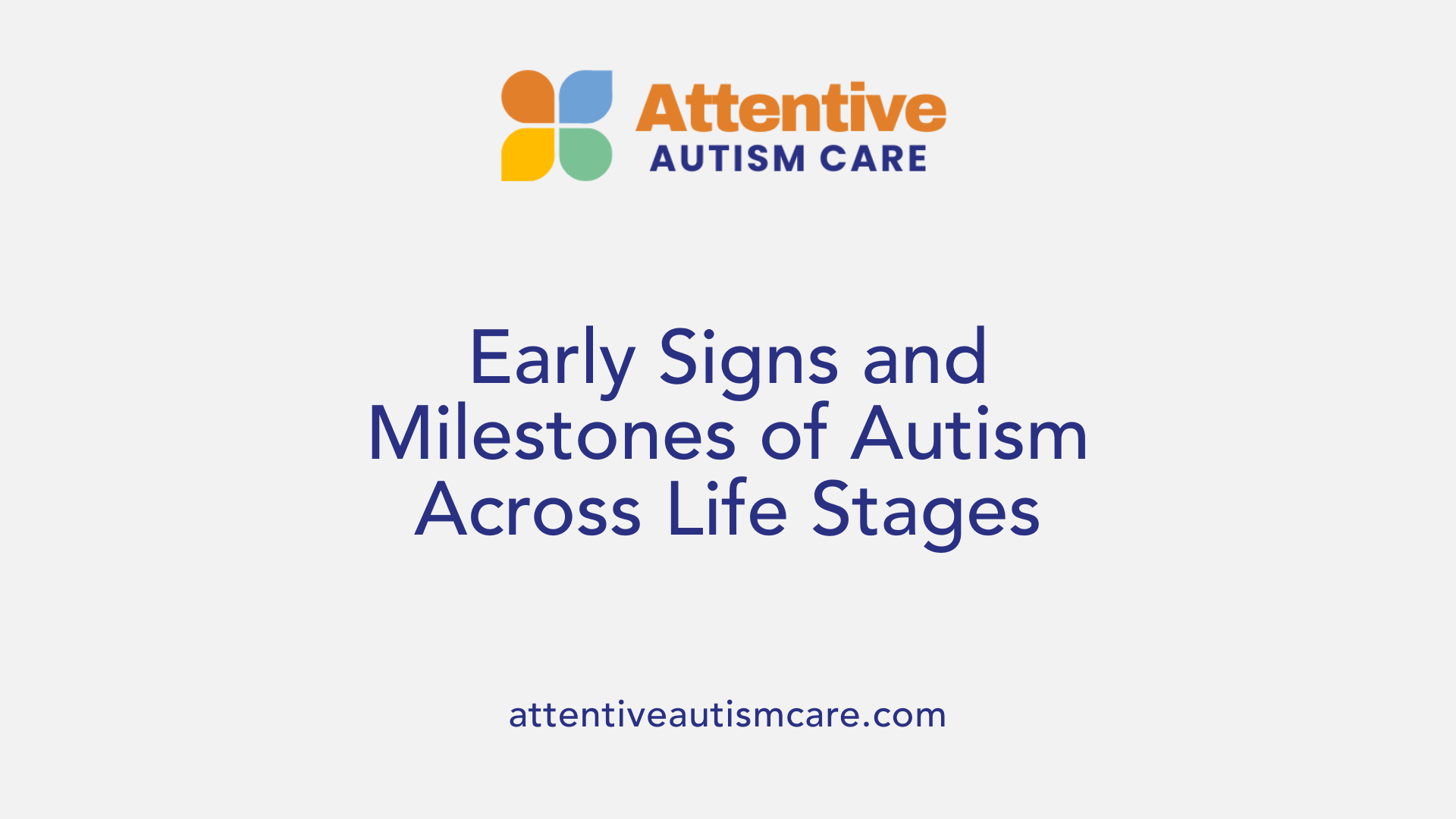
Early signs of autism in childhood
Autism spectrum disorder (ASD) usually shows noticeable signs during early childhood. These include limited eye contact, delayed speech, difficulty understanding social cues, and repetitive behaviors such as body rocking or hand-flapping. Children with autism may struggle to develop typical social and emotional relationships, often preferring routines and specific interests. These signs are often evident by age two or three, making early diagnosis possible. Early identification is crucial because it allows for timely intervention, which can significantly improve social skills, communication, and overall development.
Misinterpretation of autistic behaviors as narcissism in adults
In adults, autism signs can be subtle or less obvious, leading to frequent misinterpretation. Many high-functioning adults might display behaviors such as social withdrawal, rigid routines, or intense focus on specific interests. These behaviors can sometimes be seen as narcissistic traits like self-absorption, entitlement, or a lack of empathy.
Research from 2014 highlights that some autistic behaviors—such as hypersensitivity to criticism, difficulty admitting mistakes, or appearing emotionally distant—can resemble narcissistic tendencies. However, the motivations behind these behaviors differ. Autistic individuals often struggle with understanding social nuances and emotional reciprocity, not because they seek admiration or lack empathy deliberately.
Importance of early diagnosis for intervention
Detecting autism early in childhood allows for effective intervention strategies that nurture social skills, communication, and adaptive behaviors. Early diagnosis helps parents and educators implement tailored support plans, including behavioral therapy and social skills training. It also prevents the development of secondary issues like anxiety or depression caused by social difficulties.
In adults, accurate screening is equally important. Many autism cases go unnoticed until later in life, especially among high-functioning individuals. Recognizing autism in adulthood ensures access to appropriate services, accommodations, and support networks. It also helps avoid mislabeling behaviors as narcissism or other personality traits, which can lead to misunderstandings and inadequate treatment.
| Aspect | Childhood Signs | Adult Signs | Diagnostic Importance |
|---|---|---|---|
| Social Interaction | Limited eye contact; difficulty engaging | Social withdrawal; difficulty understanding cues | Accurate early detection enables early intervention; adult screening improves support access |
| Communication | Delayed speech; limited expressive language | Challenges in conversational reciprocity | Helps tailor communication strategies and social skills training |
| Behaviors | Repetitive routines; intense focus on interests | Rigid routines; fixation on interests | Supports early behavioral therapies; reveals ongoing needs in adults |
| Overlap with narcissism | Noted through superficial behaviors like talking about interests | Behaviors mistaken for narcissism—self-absorption, entitlement | Differentiating motivation guides appropriate treatment and reduces misdiagnosis |
Understanding these milestones and signs across different life stages enhances awareness, leading to better support and more accurate diagnoses for individuals with autism.
Social Behaviors and Their Underlying Motivations in Autism and Narcissism
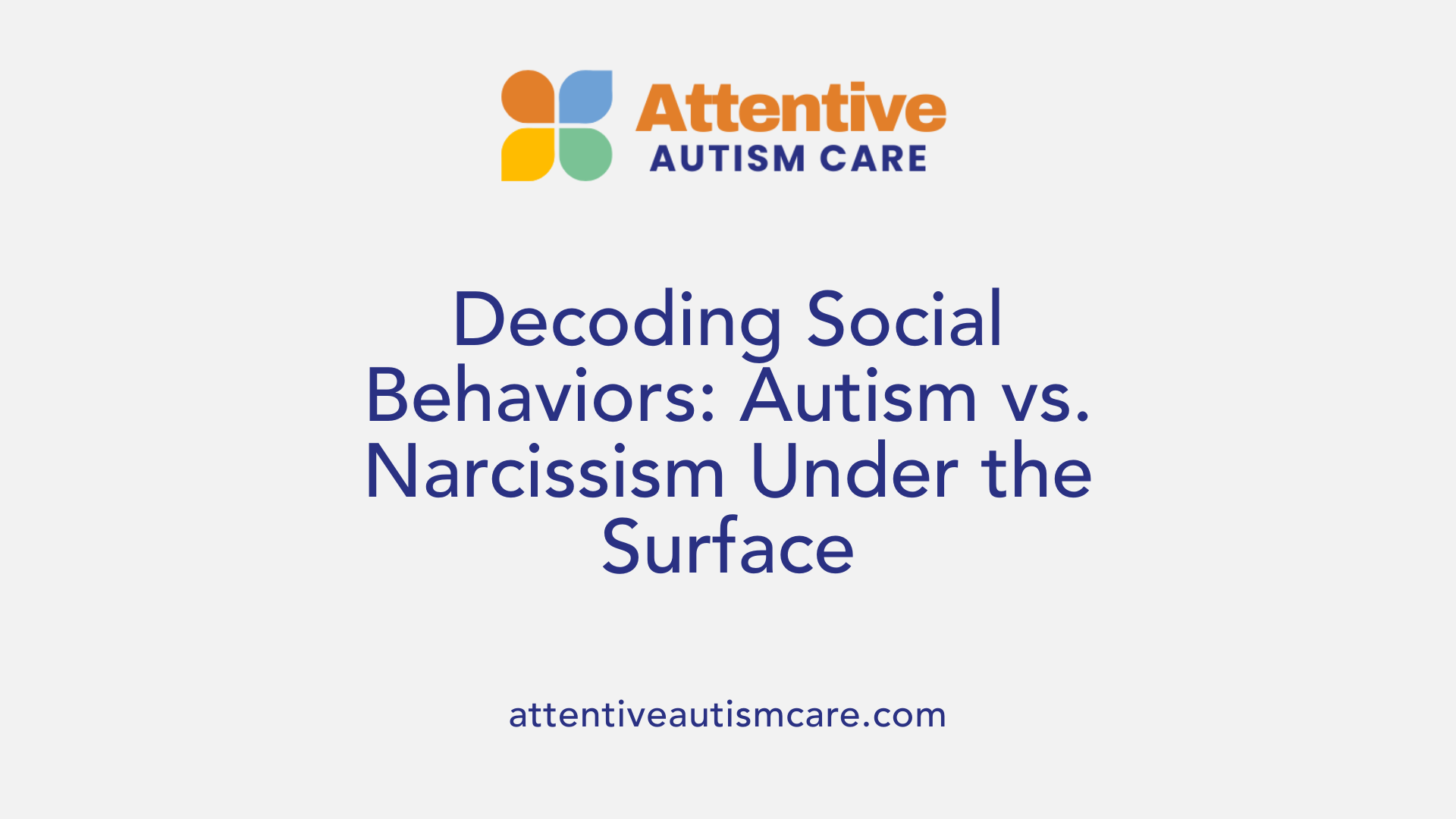
What are the similarities and differences between the social behaviors of autism and narcissism?
Autism and narcissism can both exhibit social behaviors that seem similar on the surface, such as social withdrawal, limited communication, or seeming self-involvement. Individuals with autism often show difficulties in social understanding due to neurological differences. They may avoid eye contact, have trouble recognizing social cues like facial expressions or body language, and prefer routines or specific interests that limit social interactions.
Narcissistic individuals, meanwhile, might also appear aloof, dismissive, or self-absorbed, but their behaviors are typically driven by an egocentric need for admiration and validation. They may disregard others’ feelings intentionally, using social interactions as opportunities to boost their self-image or manipulate others.
The main distinction lies in motivation: autistic individuals usually struggle with understanding social norms and are unaware of how their behavior impacts others. They genuinely desire connection but lack the skills or awareness. Conversely, narcissists are aware of their insensitivity and often use social behaviors strategically to serve their self-interest.
Despite superficial similarities, their core differences stem from the neurological underpinnings of autism versus the personality-driven nature of narcissism. Autism's social impairments originate from cognitive and emotional processing limitations, whereas narcissism involves a pattern of egocentricity, entitlement, and manipulation.
Clinical Assessment and Differentiation Strategies
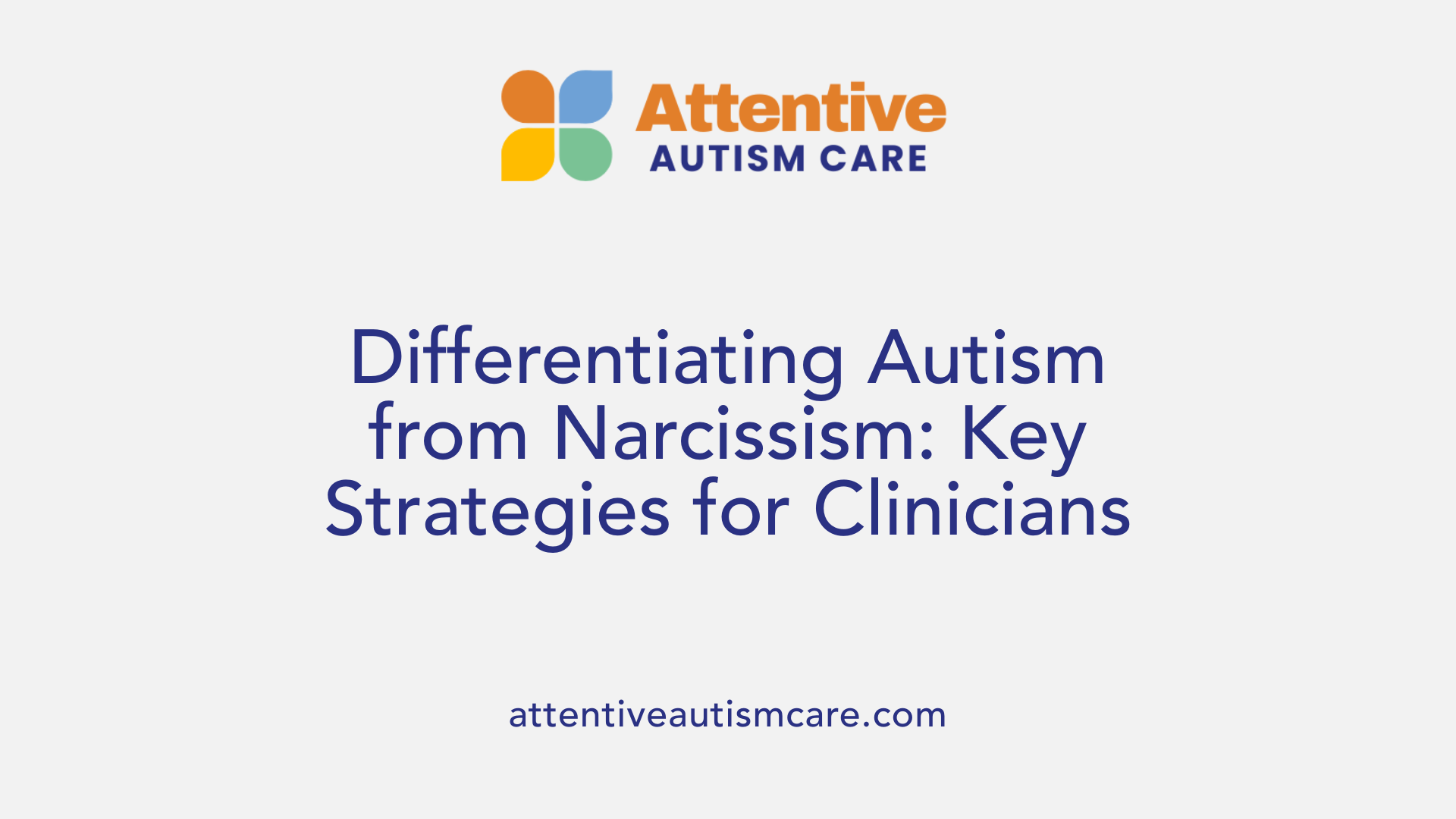
How can clinicians differentiate between autism spectrum disorder and narcissistic personality disorder based on behavioral assessments?
Clinicians rely on a combination of behavioral assessments, developmental history, and personality measures to distinguish ASD from NPD. Tools like the Autism Diagnostic Observation Schedule (ADOS-2) and the Autism Diagnostic Interview-Revised (ADI-R) are central in this process. These assessments evaluate core features such as persistent difficulties in social communication, restricted interests, repetitive behaviors, and sensory sensitivities—all characteristic of ASD. Importantly, these traits originate early in life, and their presence across various situations provides a diagnostic foundation.
In contrast, NPD features—like grandiosity, need for admiration, and exploitative tendencies—are often stable over time and emerge in adolescence or early adulthood. These traits are assessed through personality inventories and self-report measures, which help identify patterns of narcissistic traits such as self-importance, lack of empathy, and entitlement.
Overlap can occur, especially in social coldness or superficial social behaviors, necessitating a comprehensive evaluation of developmental trajectory and contextual factors. For example, ASD-related social deficits stem from neurodevelopmental impairments, whereas narcissism involves personality regulation strategies and ego defenses.
The integration of developmental history ensures clinicians recognize whether behaviors are consistent with early-onset neurodevelopmental issues or later-emerging personality traits. Additional assessments focusing on vulnerable narcissistic traits—like hypersensitivity to criticism—versus autistic deficits—such as impaired social-emotional reciprocity—are invaluable. This multi-modal approach enhances diagnostic accuracy and guides appropriate intervention planning.
What are common misconceptions about the relationship between autism and narcissism?
A widespread misunderstanding is the idea that autism and narcissism are directly related or even the same condition. While they can share superficial features, such as difficulty with social interactions, their origins, motivations, and manifestations differ substantially.
Autism is a neurodevelopmental disorder characterized by differences in brain development affecting social understanding, communication, sensory integration, and behaviors. Many autistic individuals experience genuine empathy and desire social acceptance but struggle with understanding social cues and emotions due to cognitive and perceptual differences.
Narcissism, on the other hand, involves ingrained personality traits such as an inflated sense of self-importance, need for admiration, and manipulation of others to maintain self-esteem. It is primarily associated with personality regulation rather than neurodevelopment.
Behaviors like talking about specific interests or appearing self-involved may appear in both groups but have different underlying causes. For autistic individuals, these behaviors often relate to intense preoccupations and difficulties with social reciprocity, not a sense of superiority or exploitation.
Moreover, misconceptions can falsely suggest autistic people are inherently narcissistic or lack empathy, which is not supported by research. Many autistic individuals demonstrate strong empathetic abilities, though they may express or process social information differently.
Understanding these distinctions prevents stigmatization and encourages more accurate assessments—essential for effective support and intervention—for individuals with either or both conditions.
The Rare Co-Occurrence and Family Dynamics
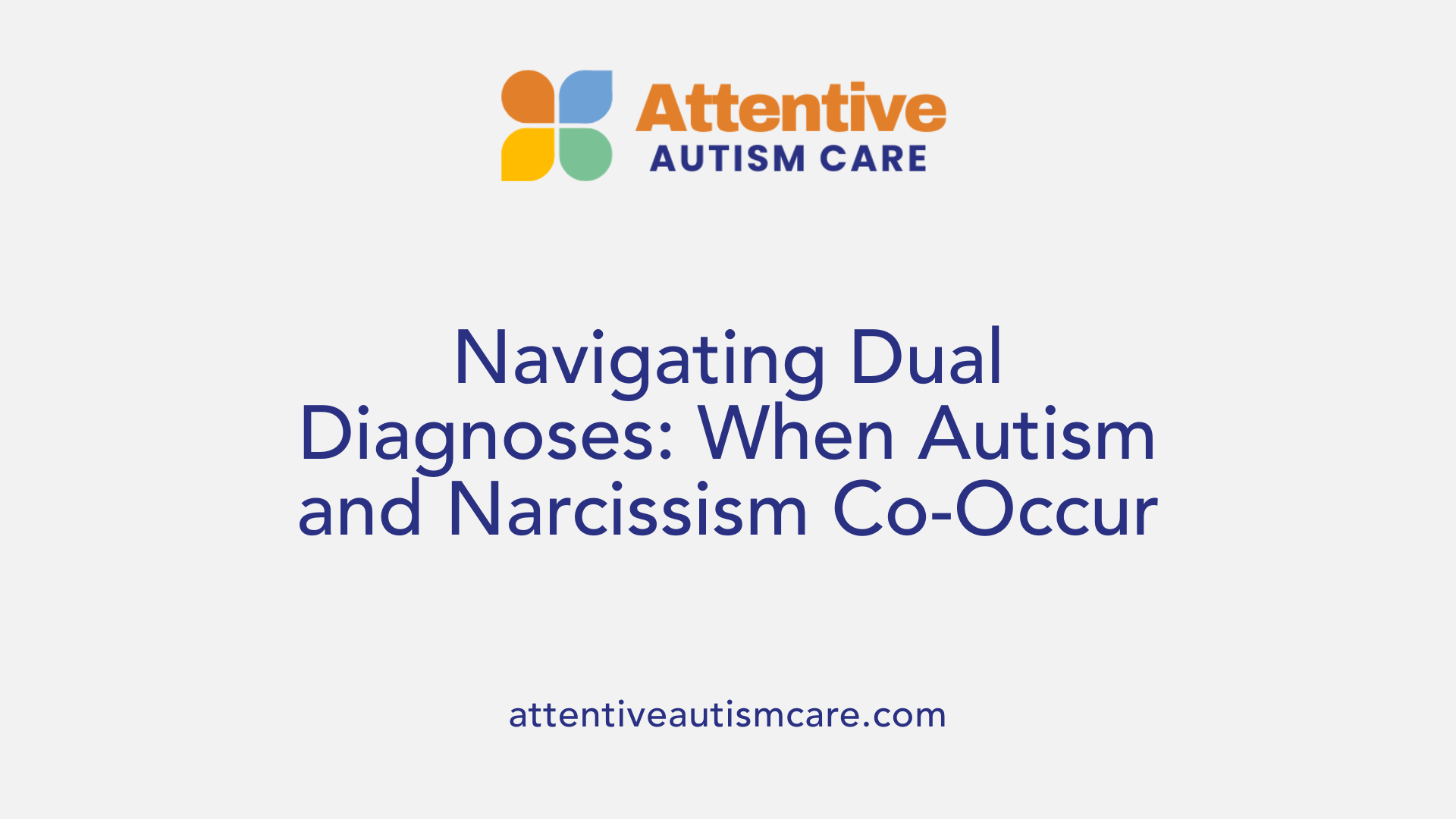
Can autism and narcissism co-occur or be present in the same individual?
While autism spectrum disorder (ASD) and narcissistic personality disorder (NPD) are distinct conditions, they can, in some cases, co-exist within the same individual. Such overlaps are relatively uncommon but important to recognize.
Autism involves neurodevelopmental deficits impacting social communication, emotional reciprocity, and restricted interests. Narcissism, on the other hand, is characterized by grandiosity, a need for admiration, and a lack of empathy.
Research from 2014 highlighted that autistic behaviors, such as hypersensitivity to criticism, could sometimes resemble narcissistic traits. For instance, autistic individuals may appear self-absorbed or prone to arrogance, often as a result of social difficulties rather than an inflated sense of self.
Recent studies in 2023 show that around 68% of autistic individuals meet criteria for at least one personality disorder, although the prevalence of true narcissistic traits remains lower, typically between 0% and 6.4%. Importantly, autistic persons may behave in ways that mimic narcissism due to social impairments, but their underlying motivations differ.
Accurate diagnosis is crucial. It requires a thorough assessment to differentiate behaviors stemming from ASD’s cognitive and emotional challenges from genuine narcissistic traits driven by self-esteem regulation issues.
In summary, although co-occurrence is rare, it is recognized in the literature, emphasizing the need for carefully tailored interventions that address both neurodevelopmental and personality aspects.
Implications for Practice, Support, and Education
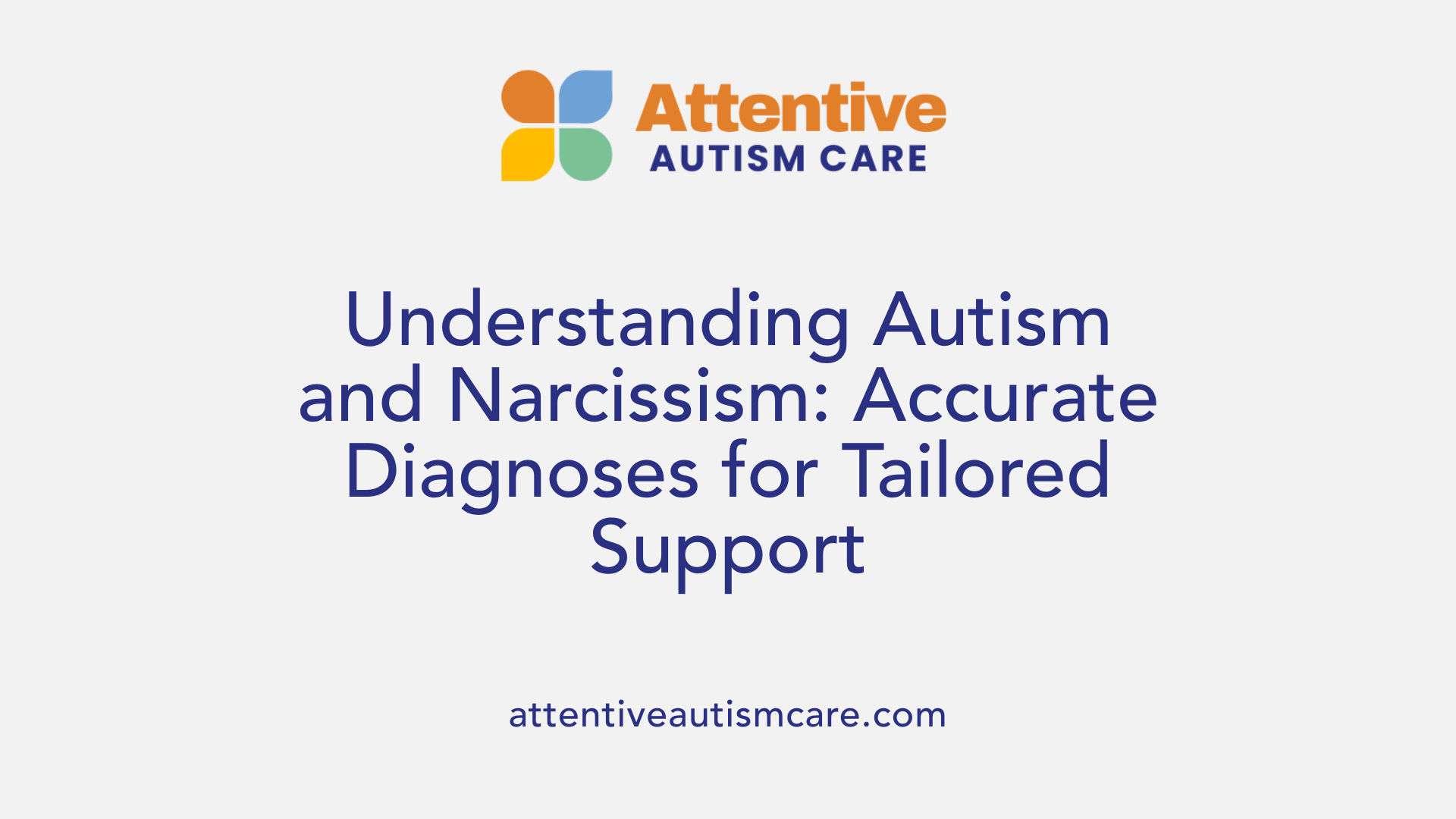
Why is an accurate diagnosis of autism and narcissism important?
Proper diagnosis allows for tailored support, effective interventions, and better understanding of individual behaviors. Autism, a neurodevelopmental condition, manifests early in life with specific social communication challenges and behavioral patterns. Conversely, narcissistic personality disorder (NPD) is a personality trait or disorder characterized by a need for admiration, entitlement, and lack of empathy, often developing during adolescence or adulthood.
Correct diagnosis helps prevent misconceptions—such as wrongly labeling autistic individuals as narcissistic or vice versa. It clarifies motivations behind behaviors, informs treatment plans, and offers families and individuals clarity about their experiences. Additionally, an accurate diagnosis is crucial for accessing existing clinical services and support frameworks designed specifically for each condition.
Strategies for tailored interventions and therapies
Interventions must address the distinct needs of each condition. For autism, therapies like Applied Behavior Analysis (ABA), social skills training, and sensory integration techniques focus on enhancing communication, reducing repetitive behaviors, and improving social understanding.
In the case of narcissistic traits or NPD, psychotherapy such as cognitive-behavioral therapy (CBT) aims to foster empathy, address self-ego issues, and develop healthier relationships.
Understanding that some behaviors may appear similar—like social withdrawal or self-focused talk—clinicians should identify core underlying issues to match appropriate treatment modalities.
Educational strategies for families and clinicians
Educational efforts should emphasize the differences in origins, development, and symptoms of autism and narcissism.
Families need guidance on recognizing early signs of autism, such as restricted interests, repetitive movements, or difficulties in emotional reciprocity, typically evident in childhood. Clinicians require training on developmental histories, using diagnostic tools like ADOS-2 and ADI-R for autism, and personality assessments for NPD.
Providing clear, accessible information helps reduce stigma and misconceptions, enabling families to seek appropriate assessments without fear of judgments or inaccuracies.
Addressing misconceptions in society
One widespread myth is that autistic individuals are inherently narcissistic or lack empathy. In reality, many autistic people experience strong empathy but may express it differently or have difficulty interpreting social cues.
Research shows that behaviors in autism—like focusing intensely on interests—are not driven by arrogance but by neurobiological differences. Similarly, narcissism involves self-esteem regulation and validation-seeking behaviors, which are absent in autism.
Educational campaigns should highlight these distinctions, dispelling myths and fostering better societal understanding. Accurate knowledge reduces stigma, promotes inclusion, and supports individuals in receiving the right help.
| Aspect | Autism | Narcissism | Differences | Common Misconceptions |
|---|---|---|---|---|
| Onset | Early childhood | During adolescence or adulthood | Developmental vs. personality-based | Autism is narcissistic; narcissism is autism |
| Core issues | Social communication deficits, sensory processing | Self-centeredness, need for admiration | Cause and motivation | Autistic individuals lack empathy; narcissistic individuals are selfish |
| Social behaviors | Restricted body language, impaired cues | Disregard for others, entitlement | Behavioral origins | All socially awkward or self-involved individuals are autistic or narcissistic |
| Treatment focus | Behavioral therapy, social skills | Psychotherapy, empathy training | Interventions vary | Mislabeling behaviors leading to improper treatment |
Recognizing these differences and overlaps promotes a nuanced understanding, which is fundamental in advancing effective diagnosis, support, and societal acceptance.
Bridging Knowledge Gaps for Better Outcomes
Autism and narcissism, despite some superficial behavioral overlaps, are fundamentally different in their origins, motivations, and developmental courses. While their social difficulties may sometimes seem similar, understanding these differences is crucial for accurate diagnosis, effective intervention, and reducing societal misconceptions. A nuanced approach that considers individual developmental history, behavioral patterns, and underlying motivations allows clinicians to tailor interventions that support social skills, emotional well-being, and family dynamics. Educating both society and healthcare professionals further dispels myths, promotes empathy, and fosters more inclusive understanding of these complex conditions. As research continues to illuminate their unique features and intersections, a clearer, more compassionate perspective can enhance support for individuals on the autism spectrum and those exhibiting narcissistic traits, ultimately leading to improved quality of life and social integration.
References
- Narcissism and Autism - Songbird Therapy
- Asperger's and Narcissism: Similarities and Differences - Healthline
- Traits of narcissistic vulnerability in adults with autism spectrum ...
- A Narcissism and Autism Connection? One Family's Experience
- Understanding The Difference Between Autism and Narcissism
- Autism spectrum disorder and personality disorders: Comorbidity ...
- Comorbidity of Autism and Personality Disorders




































































































